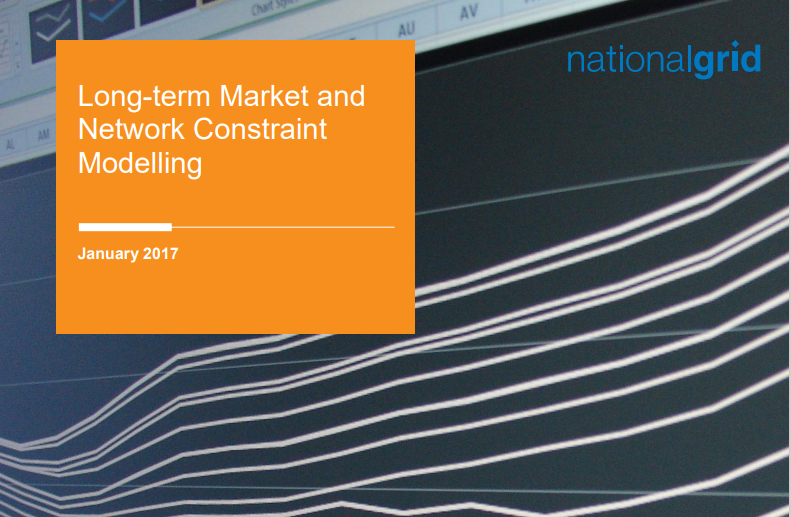National Grid: Long-term Market and Network Constraint Modelling
This report provides information on how National Grid, in its role as System Operator (SO), undertakes its long-term electricity market and network constraint modelling. In 2016 the SO transitioned from using a tool developed in-house, named ELSI (Electricity Scenario Illustrator), to a model procured externally, for developing long-term constraint forecasts of the network, which informs continuing investment decisions. This new model is called BID3.
As part of the Integrated Transmission Planning and Regulation Project (ITPR), the SO is required to provide significantly greater in depth economic analysis of the electricity network and capacity developments. In addition we are also obliged to undertake independent cost benefit assessments of network reinforcement options as part of the ‘Needs Cases for Strategic Wider Works’ submissions to Ofgem led by different transmission owners and on a GB wide basis as part of the new licence obligation regarding production of the Network Options Assessment(NOA).
The NOA’s purpose is to make recommendations to the Transmission Owners (TOs) across Great Britain as to which projects to proceed with to meet the future network requirements as defined in the Electricity Ten Year Statement (ETYS). Further to ITPR, we have existing obligations under Electricity Market Reform (EMR) to undertake analysis and reporting to HM Government’s Department for Business, Energy and Industrial Strategy (BEIS) on de-rating
This report explains:
- why we chose BID3
- why we needed to move from ELSI to BID3
- what the enhanced capabilities of BID3 over and above ELSI are
- what it will be used for
- how we ensured the model is the most economic and efficient solution for current and
future work - what enhancements were required to the model
- how the model works
- what modelling assumptions we make
- what are the sources of data that are inputs to the model
- what are some of the areas we have already identified for development of our BID3
- modelling activities to continue to improve and enrich our modelling and analysis



